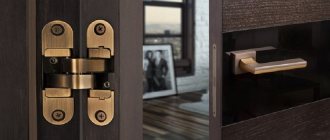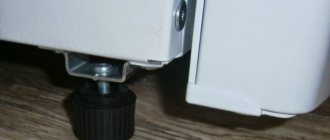To ensure that the door lock does not jam at the most inopportune moment, the mechanism must carry out periodic maintenance. Lubrication plays a key role in this process. Next, we will try to figure out which lubricant for entrance door locks is used in a given situation and how to properly lubricate the lock.
Not every type of lubricant is suitable for locks on entrance doors
Causes and consequences
There are four reasons why you have to lubricate the locking mechanism.
Dust
One of the common causes of deterioration in the functioning of a door lock is dust that gets inside over time. Gradually, the dust particles gather into a dense lump, which is mixed with iron filings. This significantly worsens the movement of the bolts installed in the locking mechanism.
Most often, this problem is faced by residents of private houses whose front door is located on the street.
Abrasion of parts
Some people think that keyhole problems can only be caused by dust, but this is not true. Often the mechanism begins to malfunction due to poor care. The parts begin to rub against each other, which accelerates the wear of the locking device parts. As a result, a lot of metal shavings appear inside, which begin to rust.
To avoid this problem, you need to lubricate the device regularly. Only with periodic lubrication will the parts not rub against each other much.
Rust
Another common problem that can cause a lock to work less well is rust. Most often, corrosion appears on a metal surface due to increased humidity levels. If rust is not removed in a timely manner, corroded parts will gradually begin to corrode. This will cause the mechanism to jam.
This problem is common among residents of dachas, private houses and cottages, since their front door lock is located on the street.
See also
How to properly hang a TV on the wall, choosing brackets and making mounts yourself
Poor sliding of moving parts
There are special parts installed inside the locking mechanism that must move smoothly. Without lubrication, their sliding deteriorates significantly, which leads to the lock jamming.
When should it be processed?
Any door fittings must be periodically lubricated, and such work should be carried out not as difficulties arise, but regularly, in order to avoid many troubles with the lock. It's no secret that this particular detail plays a vital role in ensuring the safety and security of the home, and when the lock fails, a potential threat arises both for the house itself and for its inhabitants.
Lubrication is carried out for the following purposes.
- For sliding - the use of a lubricant facilitates the free rotation of the mechanism and its operation.
- To reduce the degree of wear - if there is too little lubricating fluid in the lock, then the entire operation of the system is hampered, while the parts begin to grind, chips fly off the metal, and dust particles begin to get inside, which act like coarse abrasives.
- To combat the accumulation of dust - if there is a lack of lubrication, the particles begin to stick together into hard lumps and completely block the free movement of the unfolding crossbars.
- To prevent rust. Metal corrosion is the main enemy of every mechanism made of metal; it leads to complete or partial destruction of the material, in which case all elements of the lock become jammed, or even stop moving altogether.
Recommended maintenance intervals
Having familiarized yourself with the main reasons for the appearance of problems in the operation of the keyhole, you need to understand the frequency of lubrication of parts.
Entrance door
Many people whose front door is located on the street do not know how often to lubricate its lock. Experts recommend carrying out the procedure at least once every two months. This will help prevent dust from entering and wearing out parts installed in the mechanism.
Entrance to the apartment
People living in an apartment believe that it is not necessary to lubricate the keyhole of the front door, since it does not become dirty. However, experts recommend periodically treating the mechanism so that it does not jam due to wear of parts or the ingress of dust particles. Lubrication is not done as often as when caring for a door installed on the street. It is processed once every six months.
For interior
It is easiest to care for interior doors, since their locks are much less likely to wear out and deteriorate due to traces of corrosion appearing on the surface. It is recommended to lubricate such locks once a year. If the keyhole is practically not used, it is processed much less frequently.
Lubrication work
Let's look at how to lubricate a lock using the example of a metal entrance door equipped with a cylindrical cylinder. The keyhole must be cleaned before surgery. For this, a special liquid is purchased in advance. It needs to be poured into the key slot. It is better not to spare money so that it pours out from the excess, taking with it all the garbage that has accumulated inside.
When carrying out this procedure, it is necessary to protect the surface of the door leaf, as well as all objects located nearby. To get rid of all blockages, the key is inserted and pulled out several times into the well. Specks moistened with the cleaning liquid will begin to stick to it, like a magnet. The key must be thoroughly wiped each time.
After this, lubricant is poured or injected into the well. If not a spray is used, but just a liquid, then for convenience it is first placed in a syringe. You also need to lubricate generously, not forgetting to wipe off any excess that has come out. Otherwise they will stain the canvas.
Next, the key is also used. It is again placed in the slot and turned in all directions. This will distribute the lubricant throughout the entire mechanism. The procedure is performed several times. After which the key is removed and wiped dry.
To process the lever lock, you will have to remove it from the door and disassemble the secret. For lubrication, you must use graphic powder, dusting all the plates with it. Before installing it back, be sure to check how easily the key turns.
All described measures relate to preventive work. They need to be performed periodically and then you can forever avoid force majeure in the form of a jammed lock. But if this does happen, and you don’t have confidence in your abilities, then it’s better to turn to specialists. They will remove the key, leaving both the lock and the door intact and fully operational.
Lubricant selection
Before you start lubricating lock parts, you need to familiarize yourself with the features of common types of lubricant.
Dry
There are different types of lubricants, but dry lubricants are popular. Most often, people use graphite dust, which is better than others for dry processing of metal surfaces. The advantages of the product include the following:
- ease of use;
- efficiency;
- rust removal.
Silicone
Some manufacturers produce silicone mixtures that are suitable for processing lock mechanisms. Experts recommend using silicone compounds to process cylinder lock cylinders. Regular use of such products prevents corrosion on the surface and protects the locking mechanism from high levels of humidity.
See also
How to properly care for plastic windows with your own hands, a review of the best products
WD-40
If the locking mechanism has not been lubricated for a long time, you can treat it with WD-40. This is a highly effective composition that is suitable for removing rust from the surface of the lock mechanism. The product is ideal for restoring the functionality of old locks that are covered with a durable layer of corrosion.
The composition is also used to prevent the reappearance of rust on the surface.
Carbon
Some people use special graphite-containing carbon compounds to treat locks, which significantly extend the life of the locking mechanisms. It is necessary to apply carbon lubricants when the lock begins to jam and the key located in it stops turning.
Additionally
There are several additional types of lubricant that are used less frequently than those listed above.
Litol, solid oil
Sometimes keyholes that have begun to work worse are lubricated with grease or lithol. Such products are a soft and durable thick mass that does not lose its properties at any level of humidity and temperature. Various types of compositions are produced, but garden grease and a product with the addition of graphite powder are popular.
Sunflower oil
This is a common composition that has been used to lubricate door mechanisms for many years. Sunflower oil is found in almost every home and that is why locks are most often treated with it. Experts advise using this product only if there are no other lubricants available.
Melted fat
Sometimes people don't have sunflower oil and other products to use. In this case, you can use melted fat. This is an excellent lubricant that can restore the normal operation of keyhole parts. However, you should not use melted fat often, as it may impair the functioning of the lock in the future.
Working off
Waste is used machine oil, which is considered a good way to lubricate the lock. It is suitable for standard types of keyholes that are installed in most entrance doors. You can also use machine oil to treat locks built inside a car door.
See also
Step-by-step instructions for strengthening the banks of a pond at your dacha with your own hands
Peculiarities
The processing of various locks has certain features that you need to become familiar with.
Car door lock
Before you start lubricating the car lock, you will have to remove it from the door. To do this, use an open-end wrench to unscrew the mounting bolts responsible for fastening the lock structure. Having got rid of the fasteners, the door handle is moved to the side and the lock structure is removed. Then it is filled with machine oil and installed in place. The procedure is carried out regularly, 2-3 times a year.
Sulvadny Castle
When processing such lock systems, you cannot use conventional lubricating mixtures, as they may cause the mechanism to jam. Experts advise treating such products with graphite dust, which protects metal surfaces from corrosion and prevents strong friction of parts. You can also use a silicone-type aerosol, which improves the sliding of the lock elements.
Cylinder
Cylindrical locks are equipped with a special bolt, which must be treated with WD-40. Cylindrical models need to be lubricated much more often, as they dry out quickly. To protect the surface of the lock from corrosion, lubrication is done at least four times a year.
Code
Some modern models are equipped with a special code mechanism that increases the reliability of the door. Over time, the mechanism works worse due to lack of lubrication. When lubricating such products, use UPS-1 or WD-40 aerosols, which must be injected into special holes.
How to properly lubricate a lock
Lubrication of the lock is carried out in several stages, and the first thing it is advisable to start with is cleaning the mechanism. Silicone compounds are a good thing, but if there is already a problem with closing, silicone lubricant for door locks will not correct the situation; WD-40 is needed here.
Lubricant is poured into all accessible points of the lock
Before lubricating, it is advisable to remove all decorative trims and door handles; they will interfere with work.
When the lock acts up, ideally it is better to remove it, then disassemble it, clean it and lubricate it. But if you are too lazy to do all this, then take WD-40 and pour it generously into all accessible holes of the lock. The composition removes rust and other deposits in 30 - 40 minutes, so after filling with WD-40, leave the lock alone.
Next, insert the key into the hole and open and close the mechanism 5–7 times; if the problem goes away, then fill in the profile lubricant. If the squeaks continue, then repeat washing with WD-40, and then add lubricant. The composition is poured into several points:
- Keyhole;
- The entry point of the rotary door handle, if any;
- Locking bolts and tongues on the ends of the doors.
When lubricating a cylinder-type lock, it is necessary to remove the cylinder head and lubricate the lock mechanism and the head separately.
It is advisable to remove the lock cylinder before lubrication.
The better to lubricate
The ideal remedy for preventing and eliminating squeaking is a graphite or silicone spray lubricant that gains thickness after application. Not so good, but mineral oils (vaseline, castor) are quite suitable, but it is better to take them thickened. Third place in terms of efficiency is car oil and sewing machine oil. All these products evaporate slowly, have good viscosity, adhesion and penetration, and are resistant to abrasion.
conclusions
Based on all of the above, based on our many years of personal experience, we believe that in the vast majority of cases, locks cannot be lubricated. Not only will this not solve your problems, but it will also create new ones.
We repeat time after time: if your lock or locking system is not working correctly, do not try to solve the problem yourself - consult a specialist. Including on our forum about locks and doors>>>
Using leading questions, a specialist is able to find out the causes of your problem and suggest clear ways to solve them.
Adviсe
Quite often there is a recommendation to use used machine oil. It is even called the ideal solution to the problem. The explanation is as follows: for car enthusiasts, this composition will be free. But how justified is its use as a lubricant for a door lock? After the “working” is drained, it necessarily contains microscopic fractions of metal; This is indicated by darkening of the oil. It is hardly worth treating the mechanism with a product in which abrasive is dissolved. In addition, machine oil intensively attracts dust, which many people do not even realize.
The higher the viscosity of the composition, the worse the result - it will not be possible to achieve penetration of the drug into all “corners”. In this regard, lubricants in the form of aerosols and sprays are preferable. Especially during preventive maintenance of difficult areas - cylinders, plates, lock springs.
In fact, it turns out that there are many means that locks are processed. You just need to take into account a number of nuances. Firstly, the composition must be matched to the operating conditions of the lock. Secondly, before starting lubrication, the mechanism must be thoroughly cleaned of all contaminants. Otherwise, the meaning of maintenance is lost.











